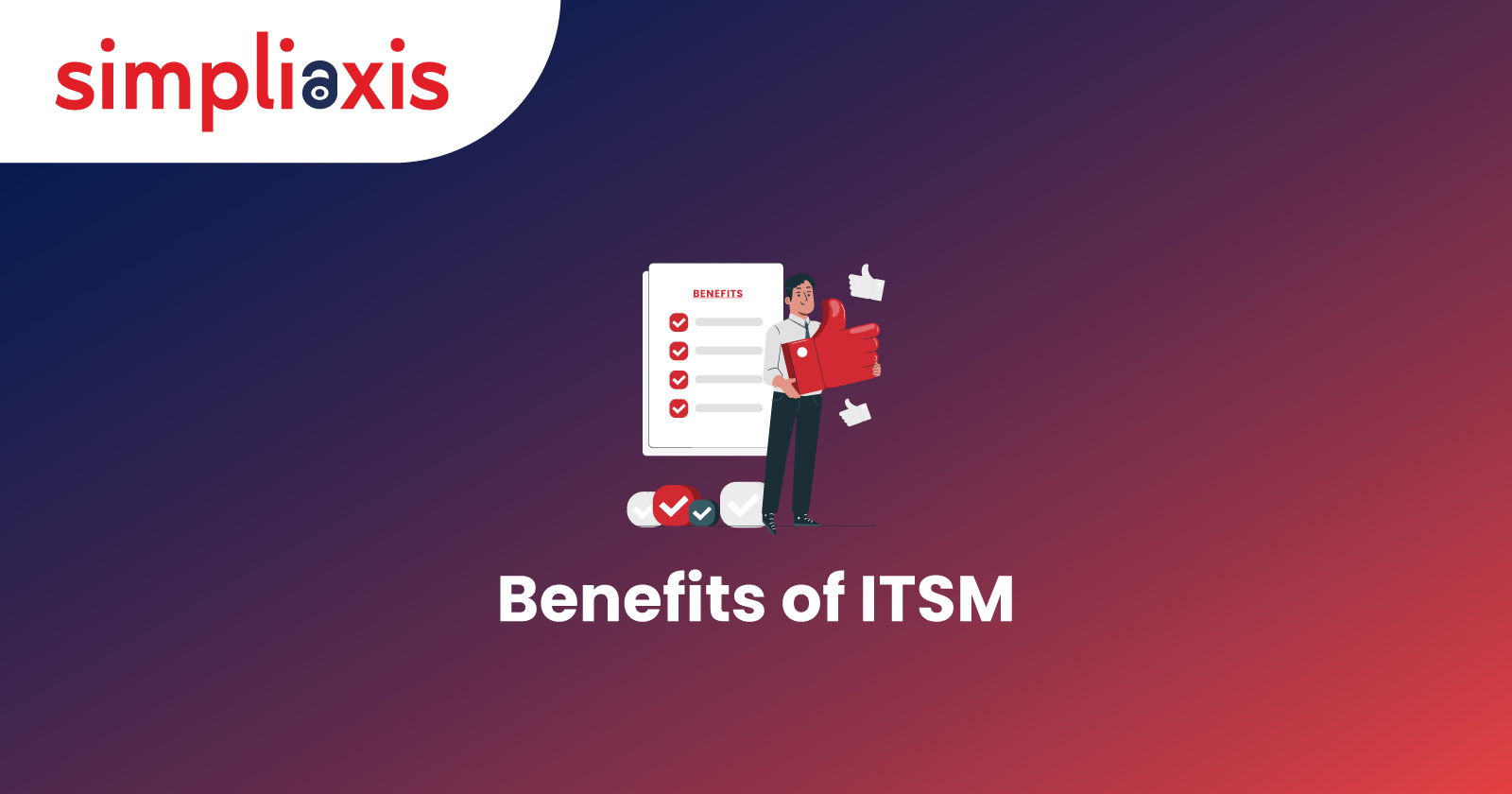In this era of high-level and rapidly changing technologies, every company somewhat depends on IT departments or services. In today's world, IT functions are deeply embedded into the daily business functions of every organization. No organisation can think of functioning smoothly or growing without help from IT services. So, for the organization's long-term success, the IT department has to play a critical role. Companies must depend on their IT department to meet the needs of both internal users and external customers. IT services must always be active if the organization remains competitive. Organizations worldwide are becoming increasingly dependent on their IT services to deliver the services and functions that are critical to the business. In any organization, IT services play a crucial role in multiple ways. They not only have to manage risk but also have to boost resilience and proactively solve issues, all with cost-effective solutions.
But then, what is the way to achieve all this? Adopting the best practices in IT service management (ITSM) is the answer. ITSM is essential to keep pace with the ever-changing demands of the business. Initially, ITSM was mainly concerned with improving IT. But now, it is the service management that propels the whole company. The fact is that today, service management has become one of the most critical practices that organizations ought to have. There are numerous IT services in practices nowadays and managing all of them centrally in one place is not only convenient but it gives you better control over these services. Besides, it saves time and money for the organization. Besides saving time and costs, ITSM provides many other benefits. We will talk about them in this article. But before that, let us understand what exactly ITSM is.
What is IT Service Management (ITSM)?
The simplest definition of ITSM is "the planning, delivering, and supporting IT services through a mix of people, processes, and technology." So, ITSM comprises everything the organization uses to deliver IT-based services to the end users, whether internal or external. Therefore, ITSM requires a strategic approach that is focused on end-users. These ITSM strategies help build an IT organization that fulfills the requirements of the end-users. This system first tries to understand the needs of end-users so that they can be fulfilled. This needs creating an IT system that can manage the demand efficiently. This would involve implementing specific processes and hardware and software requirements to improve service.
ITSM allows organizations to offer responsive services and more availability and provides many benefits to organizations. Some of the more important ones are discussed below.
Advantages of ITSM
Organizations that manage their IT operations through the creation of formal processes by using the IT service management framework get many benefits from it. Let's look at them.
1. Increase in efficiency
What is efficiency? It is getting the most out of the resources available to you. IT tools have boosted the efficiency of every type of organization for a long time. However if an organization does not have a planned list of IT assets and resources that are widespread and does not have any strategy for integrating them into the business, it may affect the overall efficiency and lead to confusion. Moreover, organizations are always short of time and don't have sufficient time to complete everything during the day. However by leveraging the ITSM best practices, they can improve their operational efficiency. Companies can maximize the value of their available assets and improve their workflows. They can use their IT resources rationally and easily monitor which resources are required for which processes. There are multiple components in ITSM by which organizations can maximize their efficiency. For example, the IT asset management tool of ITSM helps organizations set up processes for optimizing the lifecycle management of IT assets. It also helps formulate an effective strategy for procuring and disposing of IT assets.
2. Standardization helps in streamlining the operations
A robust IT service management strategy in the organization benefits it by helping it streamline workflows by standardizing practices and tools. Standardizing processes, tools, and policies results in easier and clearer communication between the different units and departments of the business so they can collaborate better. This means increased business agility and savings in time and effort. It is a defining feature of ITSM that creates accountability through standardization. This also helps the organization improve compliance with policies and procedures needed to deliver services. IT managers also benefit from IT service management as they can track the operators' actions and how service requests are being resolved. This way, a high level of visibility is built into how the organization delivers the services.
3. Helps in reducing costs
Whatever the size or type of the industry, controlling costs is one of the major concerns of every organization. And it always remains. One of the main advantages of ITSM is that it helps reduce costs. This is achieved by building new efficiencies and removing redundancies with the help of ITSM tools. This allows the organizations to deploy resources for the more important objectives thus boosting the strength and agility of the business. Another big factor in cost considerations is IT infrastructure spending. For most companies, spending on IT infrastructure and operations makes up for a major part of their costs. And this continues to increase with the increase in the size and business of the company. The company may need to hire more human resources to manage the IT infrastructure. On the other hand, ITSM automates the procedures and processes traditionally done manually as also specific repetitive tasks so that reliance on certain employees is reduced, who can then be freed for utilizing their skills and experience elsewhere. Organizations can scale their operations and IT infrastructure without hiring more people by adopting IT service management practices because the manual workload is considerably reduced.
4. Minimizes Risks
Changes occur all the time in every organization, and an element of risk is always involved in any kind of change, so it is important to plan well for them. If the changes are not properly conceived, tested, and communicated to all the concerned people, including businesses and team members, before implementing them, the risk that can come with such a change could be significantly high and may prove costly for the business. This could also lead to interruptions in services. With IT service management, this risk of disruption in services or business is minimized. Its change management system ensures that the organization can carry out any changes in the IT environment without causing any interruptions or greatly reducing them so that the applied change does not impact your business negatively. The processes, policies, and roles of the change management process all combine to work in harmony all through the change management process and support it. This facilitates clear communication with all the stakeholders, including the customer on the potential effect of the proposed change before the actual deployment of the change.
5. Improves scalability
Organizations face challenges in scaling their operations. The key to remaining relevant and competitive in the market is the ability of the organization to increase resources to fulfilling the demand or reducing consumption to control costs without affecting the delivery. Cloud-based solutions may greatly enhance scalability since they let organizations add or remove IT resources as per requirements. However, to achieve true scalability, cloud-based solutions are not enough. It requires more than that to improve scalability. Organizations need scalable processes and procedures to get maximum leverage from their IT assets. This is where IT management service plays a vital role. It helps organizations boost their scalability by introducing such processes.
6. Reduce Operational Cost
The application of IT Service Management, or ITSM, assists in low level operational costs by automating the processes, optimizing the use of resources, and improving workflows. ITSM tools help to streamline manual processes which lowers costs associated with labor and mistakes. It also offers insight into IT resources, and aids in the optimal distribution of assets which eliminates wasteful expenditures. Moreover, ITSM enhances incident management, which lowers the downtime and costs associated with business continuity disruptions. These factors contribute to increased accuracy in cost reporting, improved organizational financial performance, and significant cost reductions.
7. Improves the customer experience
When efficiency improves and productivity increases, the level of customer satisfaction is sure to increase. When processes are streamlined and risks are better managed, the delivery has fewer interruptions. The improvement is clearly visible to the customer as there are minimum service disruptions. Also, the organization's service strategies need them to align their activities with the requirements of the business. So, the organization primarily works only on those services that are desired by the business thus improving the overall customer experience. Further, the ticketing and incident response system is formalized, so the incident process system ensures that the IT organization responds to every service request that comes to it, which further increases customer satisfaction. A more satisfied customer would naturally mean more business and revenue. And this is what companies look for. So, what better benefit can you derive from IT service management?
8. Improves visibility into operations and performance
In most business processes, visibility is the main factor. In the ITSM framework, workflow processes are clearly and quickly visualized. It identifies those processes which need to be simplified. It readjusts the order of the steps in the process and removes duplicate ones, thus saving time and effort. ITSM increases the process maturity and with the increase in process maturity, the visibility into the process also increases. From the viewpoint of the team and the management, the ITSM structure gives better visibility into what has been achieved and what remains to be done. This kind of transparency lets each team member see how others are progressing and know at what stage in the process other members are. It also makes it easier for the managers to track the progress of the project, particularly where there are more teams or where the teams are working remotely. ITSM also gives greater insights into data and analytics so that teams can see which processes are taking more time or consuming more resources. It also helps to know which workflows need improvement and which tasks can be automated to improve efficiency and productivity.
9. Helps in getting a better Return on Investment (ROI)
Every organization needs to know the expected ROI before improving the IT infrastructure. They would want to know how it would reduce costs and enhance revenue. The adoption and implementation of the ITSM framework are not about procuring a software tool only. IT service management involves first embracing such processes that use the best practices for managing critical IT services and then making policies and procedures that ensure that these processes are adhered to. If ITSM has to be implemented effectively, it needs conviction in management, executives, and staff and genuine process changes. If ITSM is implemented efficiently, it will result in a faster return on investment. However, this will only happen if the organization focuses on the people and processes that are supposed to support the ITSM initiative.
10. Improvement in internal communication and collaboration
Communication and collaboration are key factors for any business to be successful and operate efficiently. One of the best advantages of ITSM is that it streamlines internal and external communication. The communication among the team members is enhanced due to increased visibility. Uniform processes and increased transparency help improve communication with management. Lastly, it helps improve customer communication through quicker responses and faster resolution of customer issues. The functions of a business can be defined as all the activities carried out by the organization. If ITSM policies and processes are implemented effectively, it can be easily seen how the IT services can collaborate with other functions more effectively. In ITSM, users are encouraged to report IT issues using the incident reporting process. This helps the organization gather more data and feedback about how the services and applications perform.
We have discussed some of the major benefits of IT service management (ITSM). The effective implementation and efficient use of ITSM offer more benefits. These advantages constantly add value with the addition of technology. With improved efficiency and productivity, reductions in risks, and increased customer satisfaction, ITSM can take your business to new heights.
IT specific ITSM Benefits vs Business level ITSM Benefits
While IT-specific benefits focus on improving internal IT operations, business-level benefits extend these improvements to create value across the entire organization.
| Category | IT-Specific ITSM Benefits | Business Level ITSM Benefits |
| Focus Area | Technical operations, service delivery, IT workflows | Organizational goals, ROI, customer satisfaction |
| Key Objective | Incident resolution, uptime, SLA compliance | Cost optimization, strategic alignment, risk mitigation |
| Operational Benefits | Reduced downtime, improved IT asset management | Streamlined cross-department processes, compliance |
| Strategies Benefits | Efficient IT resource allocation | Enhanced decision-making, competitive advantage |
| Examples | Faster ticket resolution, CMDB accuracy | Better budgeting, improved customer experience |
| Metrics | MTTR (Mean Time to Repair), system uptime % | ROI, customer retention, compliance audit success |
| Stake Holders | IT teams, service desk, technicians | Executives, customers, finance/legal departments |
| Tools and Process | ServiceNow, Jira, incident management workflows | Business analytics dashboards, KPI tracking |
| Impact Time Frame | Short-term (daily/weekly operations) | Long-term (quarterly/annual outcomes) |
Also, Check:
ITIL vs ITSM: Understanding the Key Differences
Conclusion
In today's tech-driven world, IT services are crucial for organizational success. Discover the key benefits of IT Service Management (ITSM), including increased efficiency, standardization, cost reduction, risk minimization, scalability, enhanced customer experience, improved visibility, better ROI, and enhanced communication. Implementing ITSM ensures smoother operations, reduces interruptions, and increases internal and external stakeholder satisfaction. Simpliaxis offers comprehensive ITSM training to help organizations effectively leverage these advantages. Additionally, we provide ITIL 4 Foundation Certification Training for both individuals and corporate groups through instructor-led classroom and online virtual sessions




















